MiGs, Stars & Magic Books: A Brief History of Trespassing in Moscow
An illustrated guide to urban exploration in the Russian capital.

11 February 2016
The forests went on forever: green giving way to auburn and gold, birch and spruce and pine forming a parade on either side of us, rising up in endless walls so that the car sped down a corridor, an artery shot straight through the heart of the Latvian wilderness.
There were four of us in the vehicle – Tbolt, Tin Dog, Fraggle and myself – a motley crew of photographers and Cold War aficionados on the hunt for a once-secret Soviet city deep behind the former Iron Curtain. From Riga, the capital, we drove until nightfall; then stopped overnight at a pleasant yet seemingly deserted hotel, in a village whose name I couldn’t pronounce.
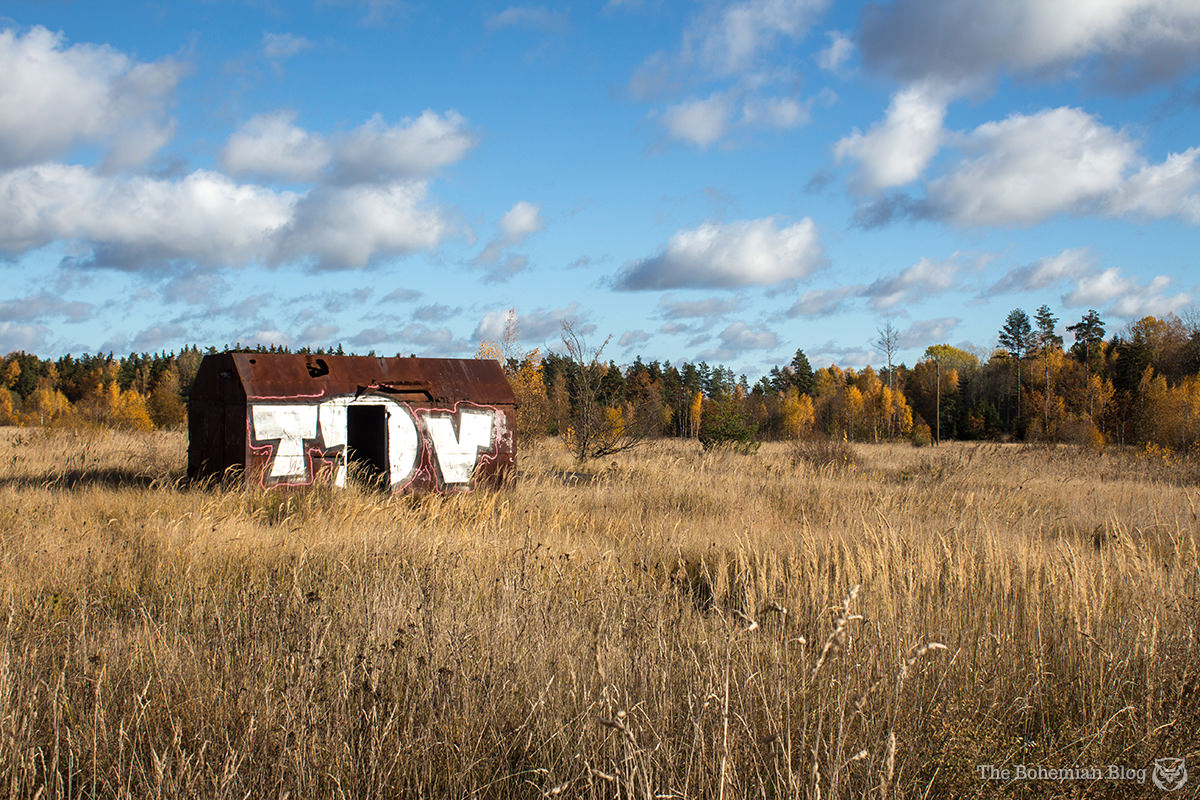
In the morning we drove again. Fraggle was at the wheel, following directions from a speaking satnav set to ‘California surfer guy’; the drawling dudeisms it produced couldn’t have sounded more out of place, as we drove through the woods looking for our Soviet ghost town.
It was late morning, somewhere on a long straight road in western Latvia, when the satnav finally announced our arrival.
“Take a right,” it told us – “that’s your right, not my right, dude.”
Four pairs of eyes swung towards the starboard bow, where an unmarked track veered off between the trees. Apparently this was it. The entrance to a former secret city, once a key Soviet radar position and home to a thriving scientific community… all of it now abandoned to the ancient forest. Putting our faith in this gnarly navigator, we pulled off the empty highway and towards the treeline.
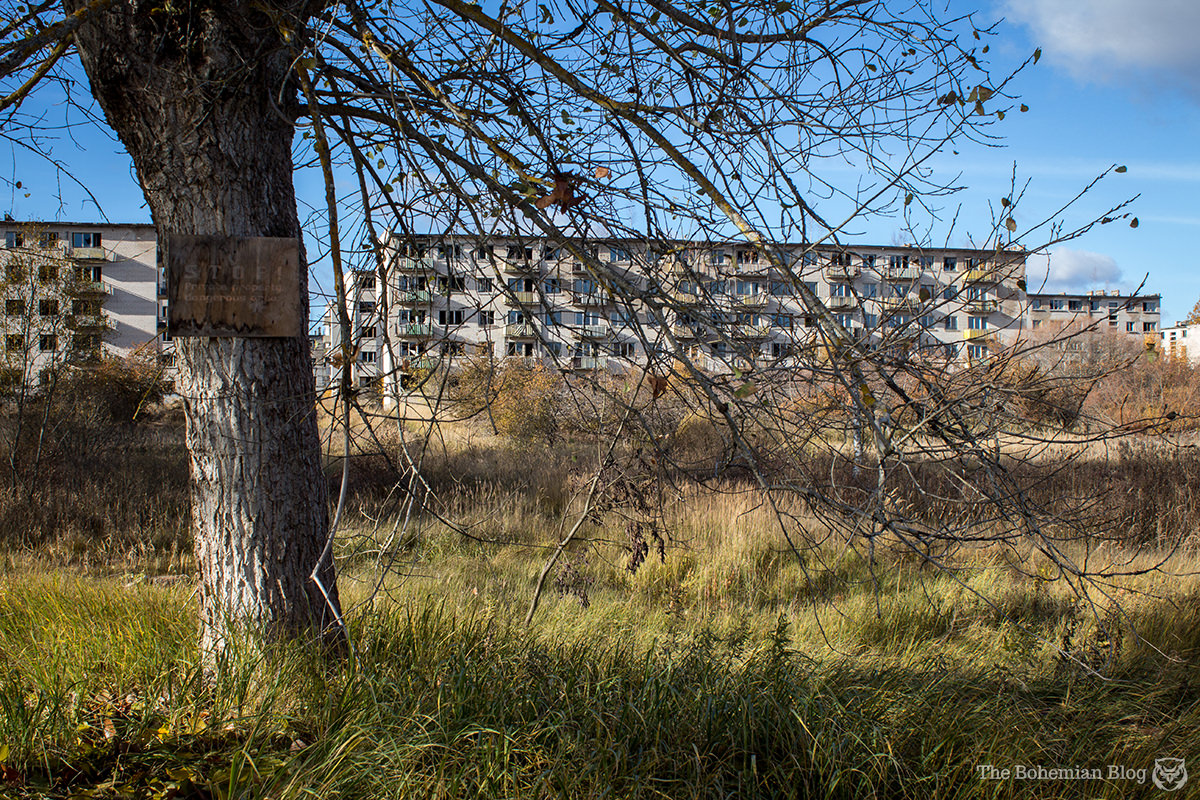
Three figures stood on the side of the access road, raincoats and clipboards, watching as we swerved towards them. They didn’t take their gaze off us even when we drew close, so that as we passed it seemed only polite to wind down a window and say Hello. Not that we could understand one another. The older man – a greying Bill Clinton lookalike in a blue cagoule – smiled and asked us something in Latvian, to which we responded with one collective shrug.
“Photographers?” someone in the car answered, guessing what the question might probably have been. “Nature photographers,” someone else added. Clinton gave us a blank look – but it definitely wasn’t a No and so we smiled, thanked him, and quickly drove on by; all the way to the end of the track, where our path was barred by the rusting gates of a former military checkpoint. Beyond that, rising above the long grass, the bleak apartment blocks of the ghost town fanned out in ordered rank and file.

Located near the Latvian town of Skrunda, the complex known as ‘Skrunda-1’ was built in 1963: a radar station garrisoned by the Soviet Union’s 129th independent Radio-Technical Unit. The facility served as an early-warning system during the Cold War, monitoring the skies for incoming missiles from the west. To this end it featured two ‘Dnepr’ radar installations (‘Hen House’ was their NATO designation), trained on Western Europe; as well as the state-of-the-art ‘Daugava’ receiving station. Positioned right at the western end of the Soviet Union, the equipment here represented one of the most important strategic sites feeding information back to Moscow.
 The town grew around the radars, a purpose-built settlement designed for the soldiers, scientists and technicians who guarded and maintained the machinery.
The town grew around the radars, a purpose-built settlement designed for the soldiers, scientists and technicians who guarded and maintained the machinery.
Covering an area of 100 acres, Skrunda-1 featured ten apartment blocks, a school, a theatre and a gymnasium; the community had shops, administrative offices, canteens and even an officers’ club. There were military barracks onsite, a water tower, boiler houses, machine workshops and pumping stations. It was a fully functional town – in its heyday, Skrunda-1 housed more than 5,000 people – but what made this settlement unusual was its classified status.
Nowadays the Russian government publicly acknowledges the existence of 44 ‘secret’ or ‘closed cities’ within its borders; while outside experts speculate there may be a dozen more that remain unmentioned.
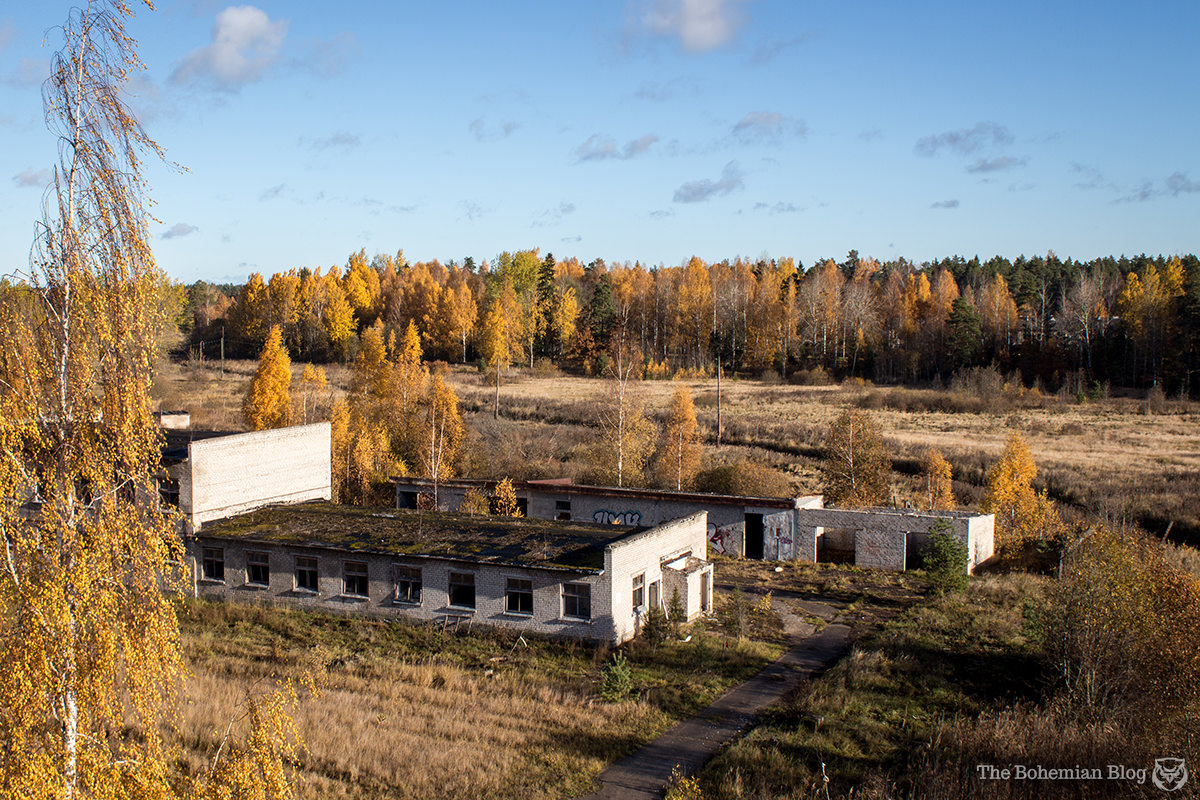 During the Soviet era these closed cities were built throughout satellite states as well, typically as bases for secret research programmes, nuclear facilities, clandestine military operations, and so on. They would function like a city-sized military base, with project personal, workers, soldiers, engineers and whole families, too, living within a ring of secure checkpoints and militarised borders.
During the Soviet era these closed cities were built throughout satellite states as well, typically as bases for secret research programmes, nuclear facilities, clandestine military operations, and so on. They would function like a city-sized military base, with project personal, workers, soldiers, engineers and whole families, too, living within a ring of secure checkpoints and militarised borders.
(I’ve already written about a former closed city in Crimea, the port town of Balaklava that was associated with the nuclear submarine base designated ‘Objekt 825.’)
Often these secret cities were omitted from maps or road signs, and many went nameless. They would be designated instead by the name of the nearest town combined with a special postcode: so there was Chelyabinsk‑65; Arzamas-16; and in the Soviet Socialist Republic of Latvia, a military complex known only as ‘Skrunda-1.’
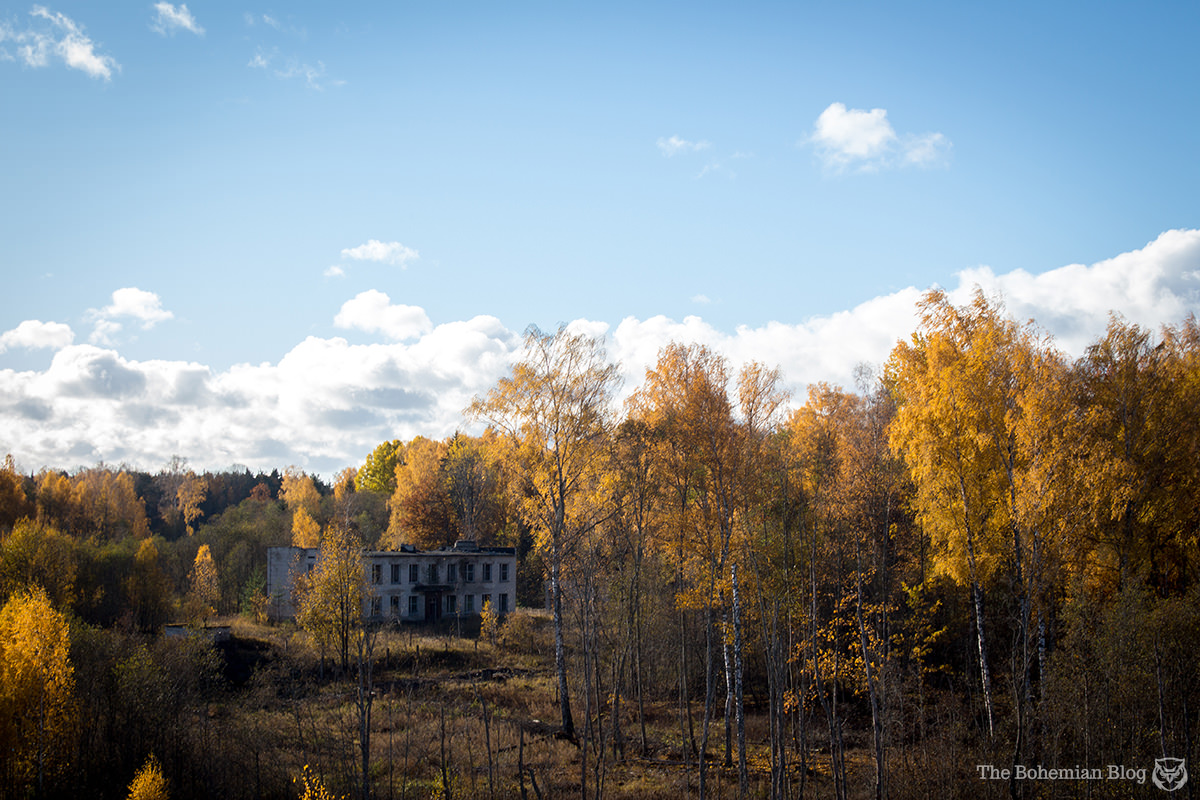
Not that such a large facility could remain secret for very long. Local television and radio stations would find their signals jammed by the huge radar presence of Skrunda-1, so that soon enough the Latvians had an idea what was going on there; and Western intelligence agencies weren’t far behind.
Most of these Soviet secret cities were either abandoned or declassified, following the collapse of the USSR in 1991. A few of those within Russia’s own borders maintain their closed status today, but elsewhere, as Russian troops were withdrawn from the former Soviet states, they would leave in their wake the empty shells of cities that had never officially existed.
At the entrance to Skrunda-1, the guardhouse was a charred and crumbling mess. We bypassed the heavy gate, walking instead through a gaping hole smashed straight through a brick wall. Inside, the remains of a campfire were surrounded by empty bottles and discarded clothing.

“Hell of a party that must have been,” muttered Tin Dog.
Beyond the gate, slender trees lined the straight road into town. We began to walk.
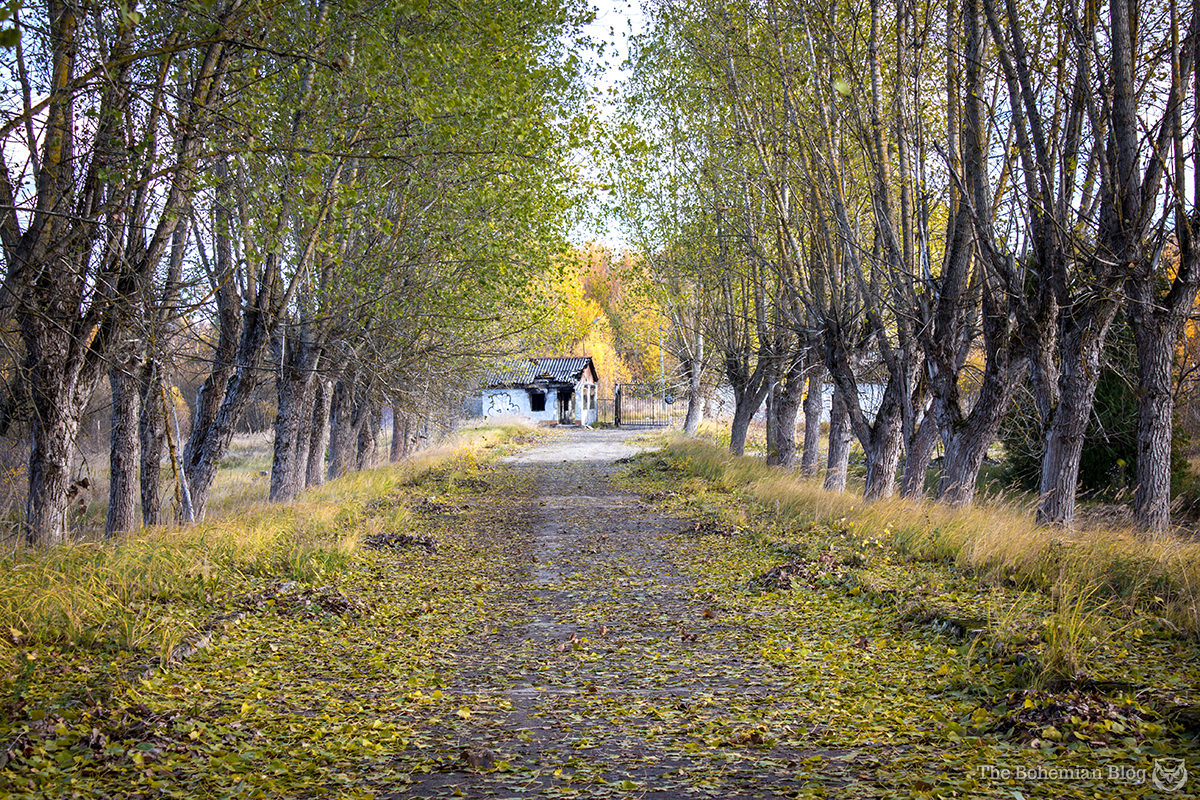 Skrunda-1 was built in a hollow of the forest; a clearing of long grass and broken concrete cubes, around which the dark treeline folded in like a perimeter wall. With a whole town spread out ahead of us, it was difficult to know where to start. We veered left, off the track, around a handful of smaller huts and garages towards what looked to be a hall of some kind.
Skrunda-1 was built in a hollow of the forest; a clearing of long grass and broken concrete cubes, around which the dark treeline folded in like a perimeter wall. With a whole town spread out ahead of us, it was difficult to know where to start. We veered left, off the track, around a handful of smaller huts and garages towards what looked to be a hall of some kind.
The building was a two-storey barn, visibly sagging and surrounded by broken glass and tiles. Stepping over the lintel, dry, peeled paint crunched under my feet. This had been a gymnasium once – the wooden floorboards now warped and buckling like the surface of an ocean. Murals of athletes were painted around the walls in the socialist-realist style; and at the far end, the hall was branded with the hammer-and-sickle crest of CSKA Moscow, the Red Army sports club, alongside a torch and golden medal.
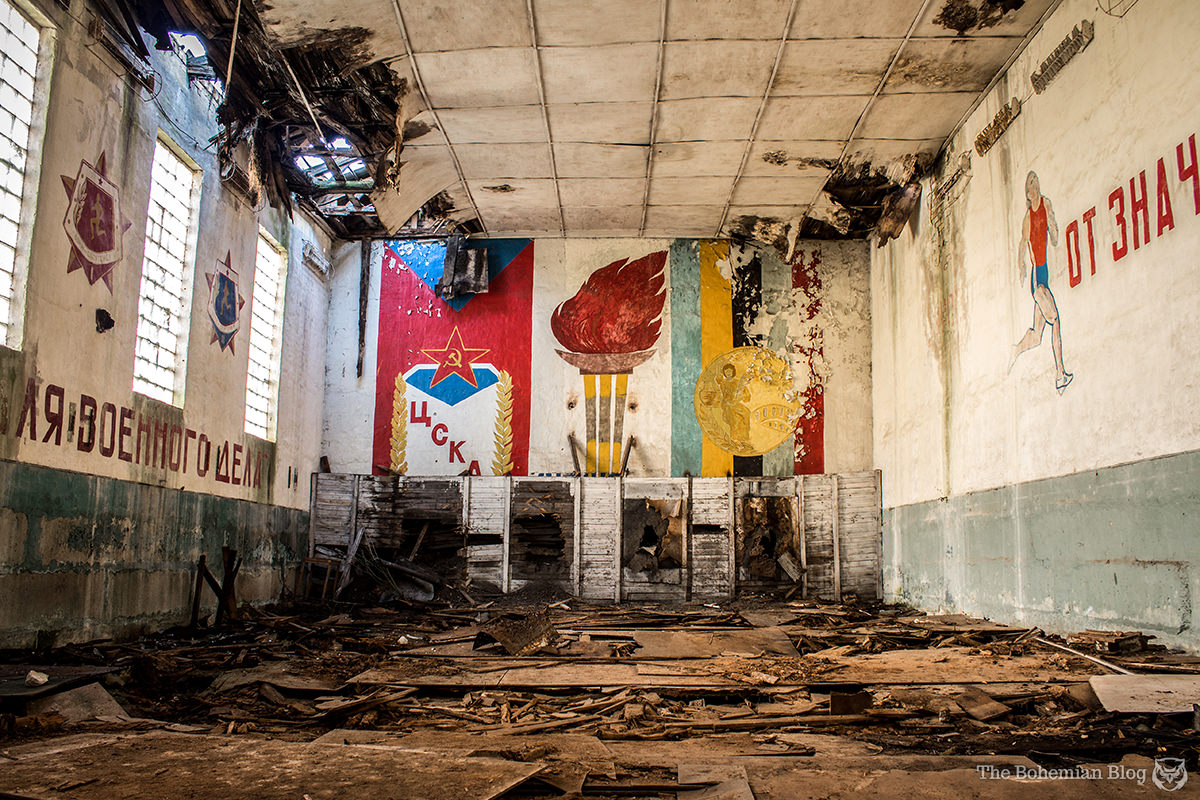
Most recently this gymnasium had been used as a firing range; judging by the shattered targets set against the end wall.
In the entrance corridor, steps led up to a spectators’ balcony. The middle part of the wooden staircase was missing though, rotted through and collapsed. I glanced briefly up towards the higher floor, towards the stump of stairs that jutted out from the landing before splintering off into nothingness. I could probably have reached it, if I jumped; but the whole building looked set to collapse, and I feared touching anything in case the whole place came crashing down around me.
Near the gymnasium we passed a patch of rough ground, an overgrown plaza where leaves and rubble all but obscured a rectangular concrete foundation. There had been something built here, once. I wondered if it was the radar facilities themselves – levelled to the ground after the Russians evacuated all reusable technology – or perhaps the space where Skrunda-1’s prestigious Daryal-UM radar was being built.
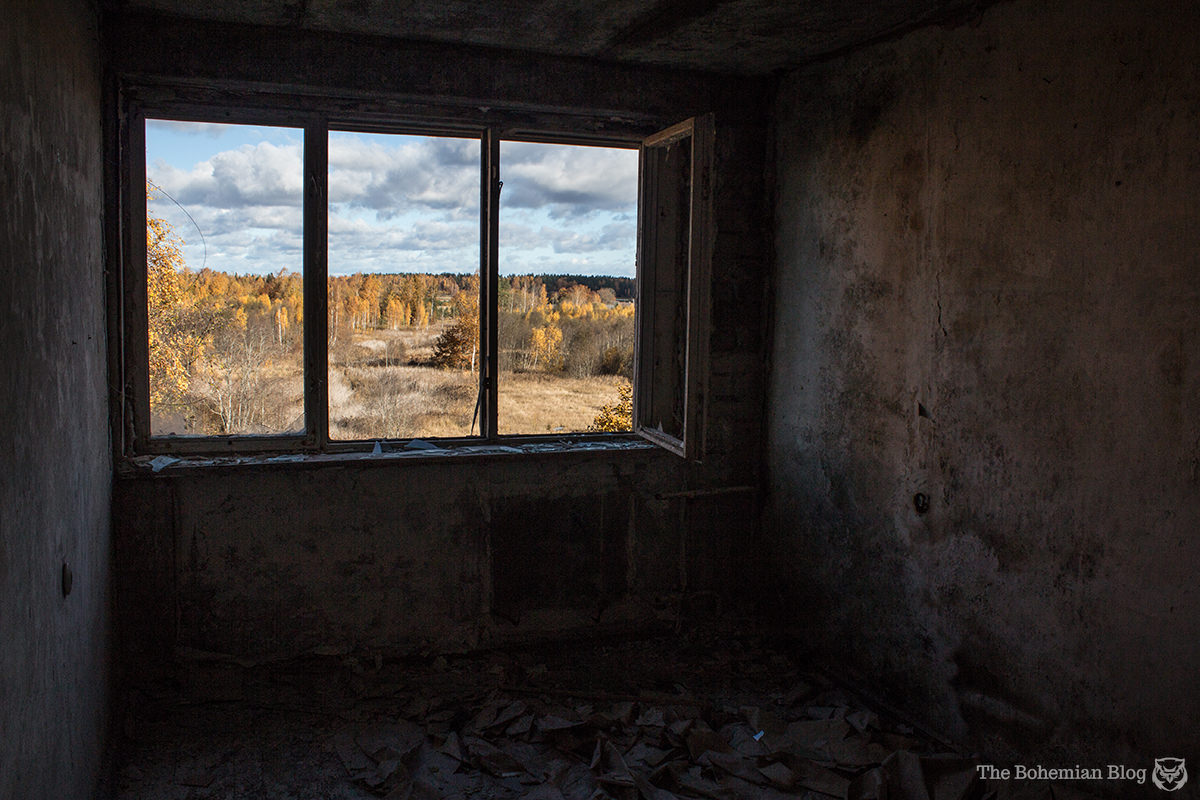
 The Daryal site was never finished. Construction began in 1985, and by 1991 the building was the height of a 20-floor apartment block. But with pressure on the Russian Army to complete their withdrawal from Latvia, there must have seemed little point in finishing the project.
The Daryal site was never finished. Construction began in 1985, and by 1991 the building was the height of a 20-floor apartment block. But with pressure on the Russian Army to complete their withdrawal from Latvia, there must have seemed little point in finishing the project.
In May 1995, while Russian troops still occupied Skrunda-1, the unfinished radar was demolished. The Latvian government hired an American demolition firm for the job, paying $8 million for a dramatic ceremony that even featured an original musical soundtrack.
Now, twenty years on, it was hard to tell one demolished feature from the next – and the areas of the complex that had once played the most significant, sensitive roles, were little more than rubble, husks and weeds.
The next building we entered though, was easy enough to read. It was a school: stone steps led up into a huge space, a darkened corridor feeding off into a dozen classrooms. Empty frames hung side by side on walls. Chalkboards wore dust and graffiti tags. All about, doors creaked as the Baltic wind surged bitterly through broken windows.
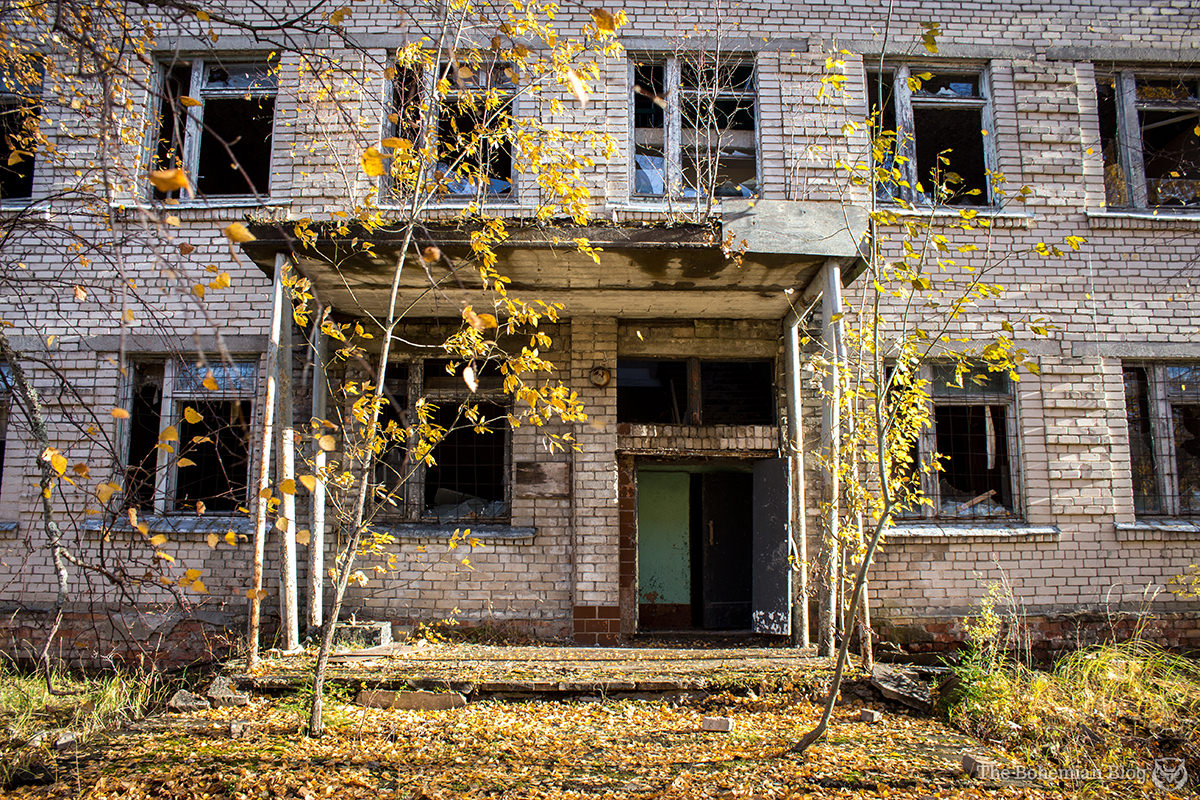
 The four of us explored independently, each lost in our own interactions with this space… and the memories to which it alluded. Above a stairwell near the entrance, a wooden panel was painted with the slogan: To serve in the armed forces is honourable and responsible! I followed it up, one floor then another.
The four of us explored independently, each lost in our own interactions with this space… and the memories to which it alluded. Above a stairwell near the entrance, a wooden panel was painted with the slogan: To serve in the armed forces is honourable and responsible! I followed it up, one floor then another.
It was clear the place had seen vandals, looters, though largely the decay looked like the work of the elements. The school was stripped almost bare, little left but broken furniture and empty shelves. Rot and water damage was everywhere, the floorboards no more than a soggy mess in places.
I’d lost track of my friends by now, though I rarely felt alone; the building had hardly resigned itself to a quiet death. Several times I heard the creak of wooden boards, a door swinging shut, and assumed one of the others had caught me up… but then I‘d investigate to find an empty room.
In a bright, pillared hall on one of the higher floors, a wall picture offered a visual guide to polishing boots and hanging uniforms. From its unnatural position propped up on an altar of bare bricks, I guessed we weren’t the first photographers to come this way.
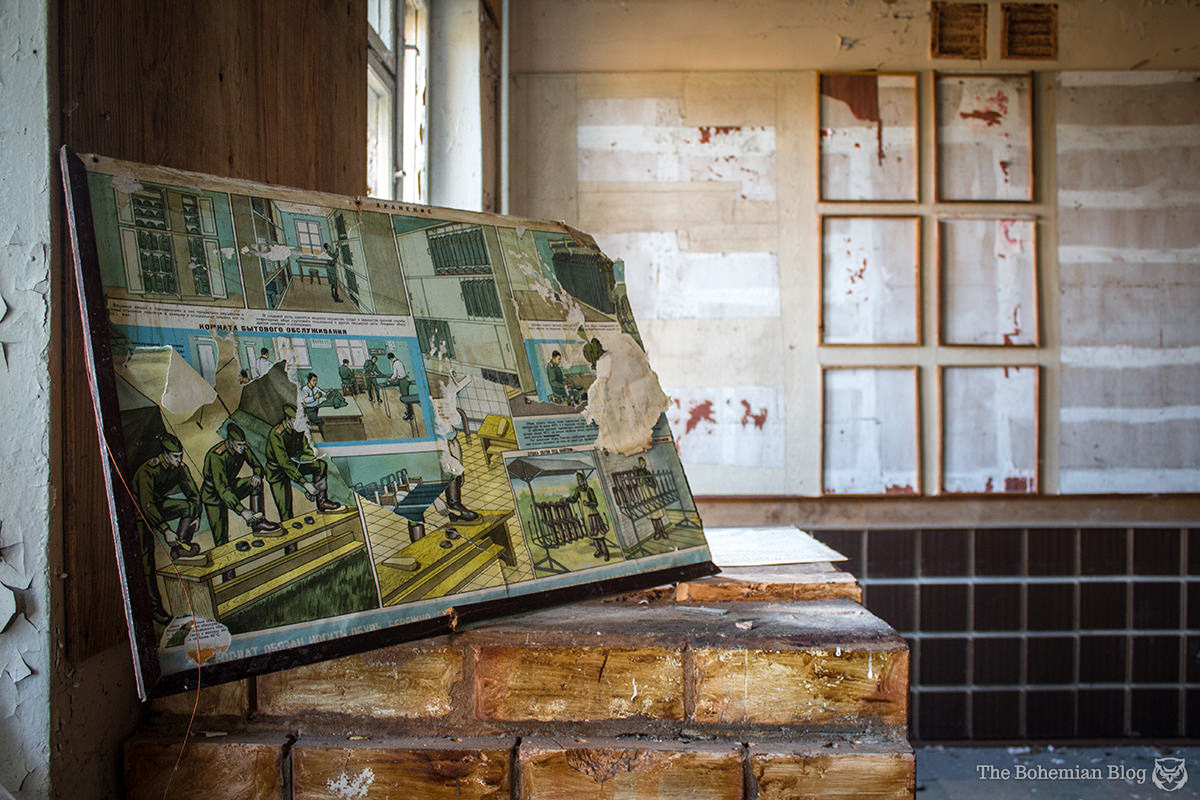
Following the stairwell up again, I soon found myself stepping out onto the rooftop – a long rectangle of gravel and black matting, which fell away abruptly at the edges. The town opened right up beneath me, from the nearby cubes of the gymnasium and administrative offices, right along the main street to the residential blocks beyond: the tallest buildings still standing, a small forest of concrete and shattered glass. Past that lay a cluster of smaller, service buildings topped by the mast-like cylinder of a water tower.
As I gazed across the devastation of an entire town gone to ruin, a low rumbling gradually separated itself from the sound of the wind, and then a small truck came round the corner of a nearby office block. I ducked back, away from the edge – the vehicle paused, revved, then moved on.

Soon the others joined me for the rooftop view; some of them more comfortable with the height, the sheer drop, than others. We were done here, and we made to leave.
As I passed a window on the stairs however, something caught my eye: a movement. Squinting against the cold white sunlight, I saw two figures in the distance. They were dressed in black uniforms, patrolling a perimeter track that skirted the complex, just a few buildings away. One of the pair held his hand to his mouth, as if speaking into a radio.
We were no longer alone in the ghost town.
By 1994, the Russian military still occupied Skrunda-1. In February that year, Latvian and Russian representatives met in Moscow to discuss the site’s fate; the Latvians calling for the complete withdrawal of Russian soldiers from their newly independent republic. In the end it was agreed that Russia would keep Skrunda-1 for four more years, followed by an additional 18 months for dismantling the facility and its equipment.

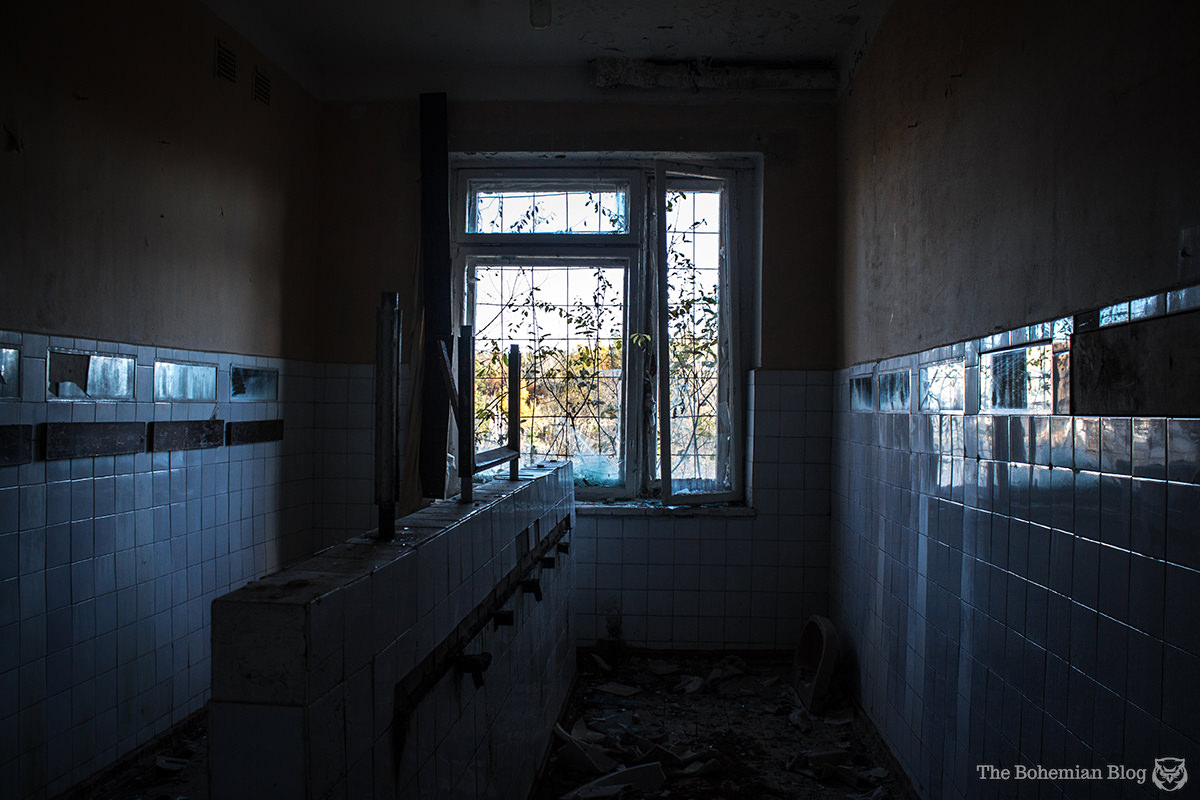 The base continued to function as normal until 31 August 1998 – despite anti-Russian rallies by Latvian nationalists – but once that date approached, the Russians appealed for another extension. They had planned to transfer their radar equipment from Skrunda-1 to the Volga station in Belarus, but that new facility was not yet complete.
The base continued to function as normal until 31 August 1998 – despite anti-Russian rallies by Latvian nationalists – but once that date approached, the Russians appealed for another extension. They had planned to transfer their radar equipment from Skrunda-1 to the Volga station in Belarus, but that new facility was not yet complete.
Riga denied the request; and in a joint statement that year, the three Baltic States urged Boris Yeltsin to complete the removal of all Russian troops from the region.
The Russians left, taking all valuable equipment back with them, and an OSCE inspection team confirmed the closure of the radar facilities in September 1998. The more sensitive areas of Skrunda-1 were stripped bare and in some cases, bulldozed. The secret city’s last inhabitant moved out in 1999.
All that then remained of the bustling scientific and military community was its empty shells: 60 buildings rotting in the forest. The Latvian government had no use for them, but neither did it have the money to demolish these Soviet skeletons. Instead, Skrunda-1 was simply left to the trees, the grass and vines, whose hungry roots began the slow process of dismantling it themselves.
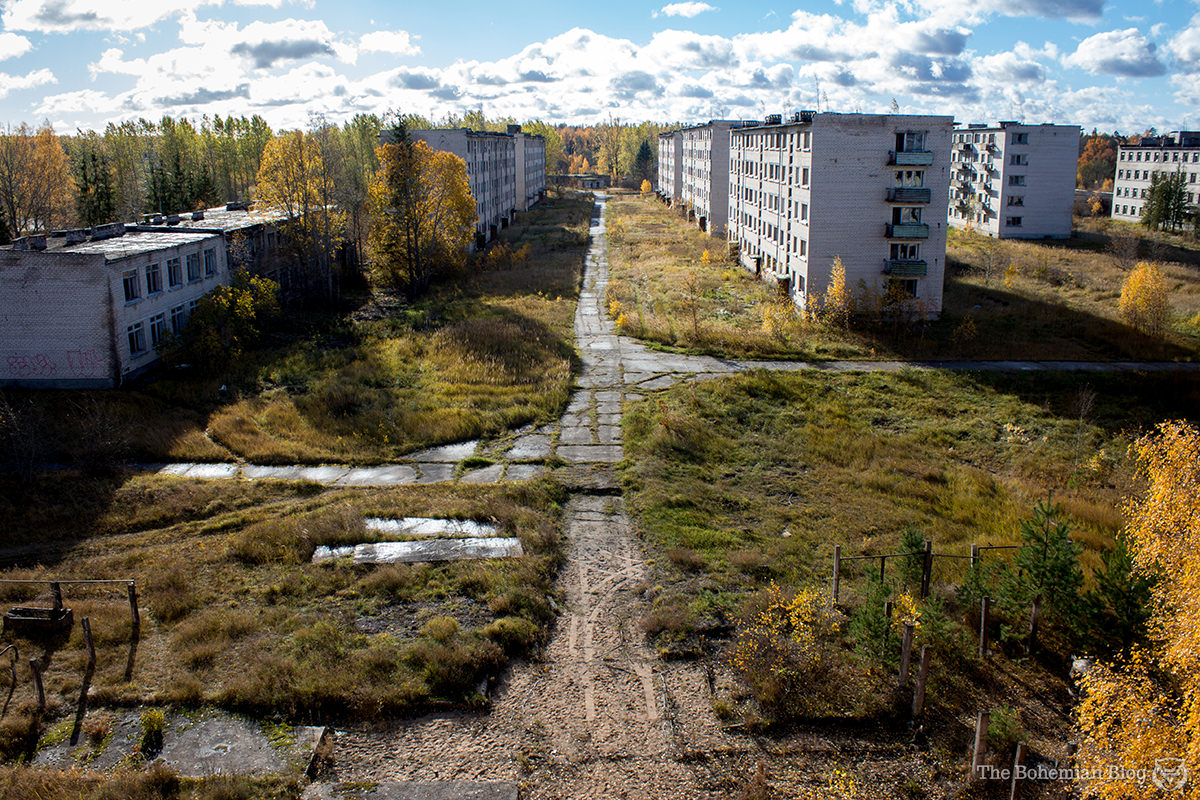
The two men I’d spotted, I didn’t know if they were security guards, police or military – but I’d seen them circling west, and so the four of us headed east.
We followed a main street, a paved thoroughfare that formed a backbone to the complex; from the school and gymnasium, to the large apartment blocks that clustered about the far end. By my reckoning we had just a couple of minutes to find cover, before those men in black came into view behind us.
A plaza opened beside us, where an obelisk rose up from the grass like a needle. It was a monument to something and I briefly searched about for a plaque, for information of any kind – but the significance of the memorial, like so much else here, had already been lost to the undergrowth.

“They’ve blocked us in,” said Tbolt, and I looked to see where he was pointing: back down that long, straight road to the security gates. Our hire car was visible through the bars, and behind it, a white van now obstructed our escape route.
Our options from here were limited. For all we knew the men had guns so running and hiding, anything fast or suspicious, didn’t seem like a wise idea. We could try to find them first, and turn ourselves in – or else keep going, and see how much we could explore before they spotted us; at which point we’d apologise politely and (try to) leave.
The decision was unanimous and so we ducked – calmly, casually – out of sight and into the open front of a large, low building that faced the plaza. We were greeted immediately by the familiar face of Vladimir Lenin, peering out from the yellow-and-red shards of a mural.

The wall that ran beside him was painted with historical scenes: a medieval warrior on horseback; 18th century Russians battling a Turk; an early 20th century naval battle; and then the glorious Revolution, World War Two, and a scene – I’m guessing – from the Soviet-Afghan War. Lenin gazed along Russia’s military timeline with a proud smile, unperturbed by the soiled mattress that lay discarded in the corner beneath him.
The room next door was a theatre, wooden stage giving way to the worms and rotten green drapes hanging heavy on the walls. This building appeared to have been a community centre, or ‘Palace of Culture,’ as per the Soviet socialist model.
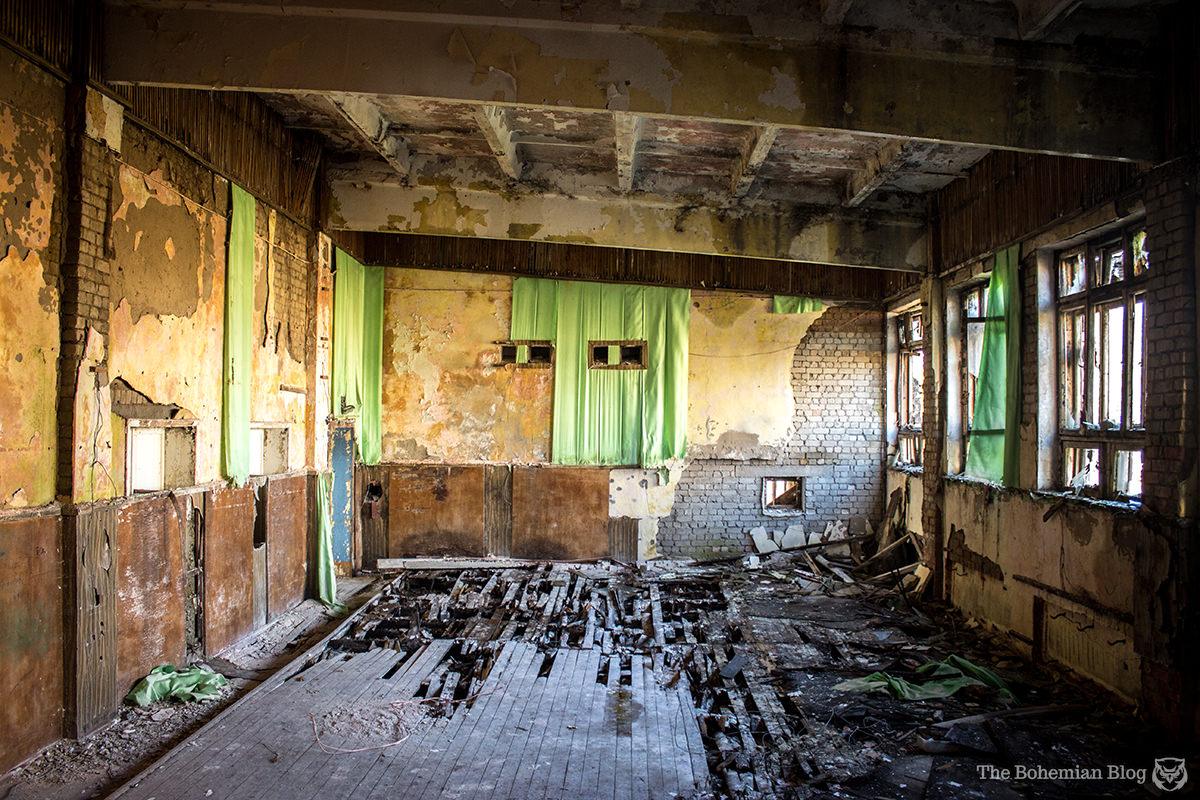
Crossing from the theatre to the residential blocks, we were careful to move fast – but not too fast – over the central boulevard. There was nobody in sight though, as we entered the first apartment block by its nearest door. No surprises inside: the place was gutted, bare, derelict. A poster from some Soviet film lay moulding on the floorboards.
I went to a window, to look out onto the space between the buildings. The track was largely overgrown, just one narrow through-road and a poignant lack of parking spaces. Clearly, residents here were not expected to have their own means of transport; their life, everything they’d ever need, existed within walking distance.
I heard a crashing sound, glanced about, but saw nothing. I waited, held my breath… and then watched as a whole sheet of glass fell free of a fourth floor window, smashing to pieces on a balcony down below. These buildings were falling apart by the minute.
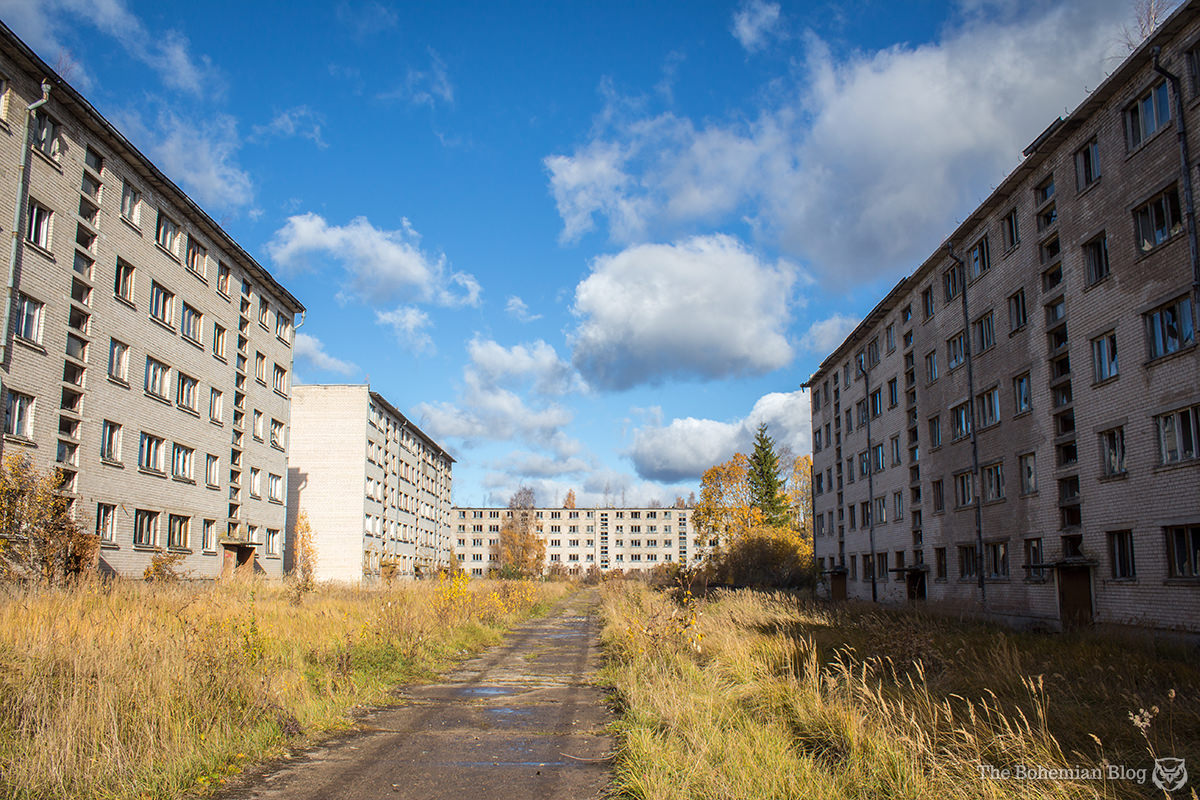
We made our way through the estate, the blocks closing around us like a brickwork cage. This might have been pleasant, once – clean, fresh, and with all the colours of life – but now the bone-grey buildings exuded an atmosphere of death and stagnation. Abandoned homes stacked one upon another. Glass shards glinting in empty sockets. The alien quality of this place unsettled me far more than the idea of living, breathing human guards pursuing us.
At the end of the street, we entered another building; this time hitting the central staircase, and climbing it to the highest floor. The apartments were simple, but spacious enough that they might once have been quite comfortable. One of the perks associated with living in a closed city was superior accommodation – so likely these homes had been a step up from the typical Soviet standard.
Those standards had evidently slipped though, in the 15 years since anyone called this place home: wallpaper peeled away in heavy rolls, to reveal the strata of past redecorations. A few rooms were still fitted with radiators – others only disconnected pipes. Moss grew on walls like green velvet, and some floors were spongy underfoot; a disconcerting sensation, up here on the fifth floor.
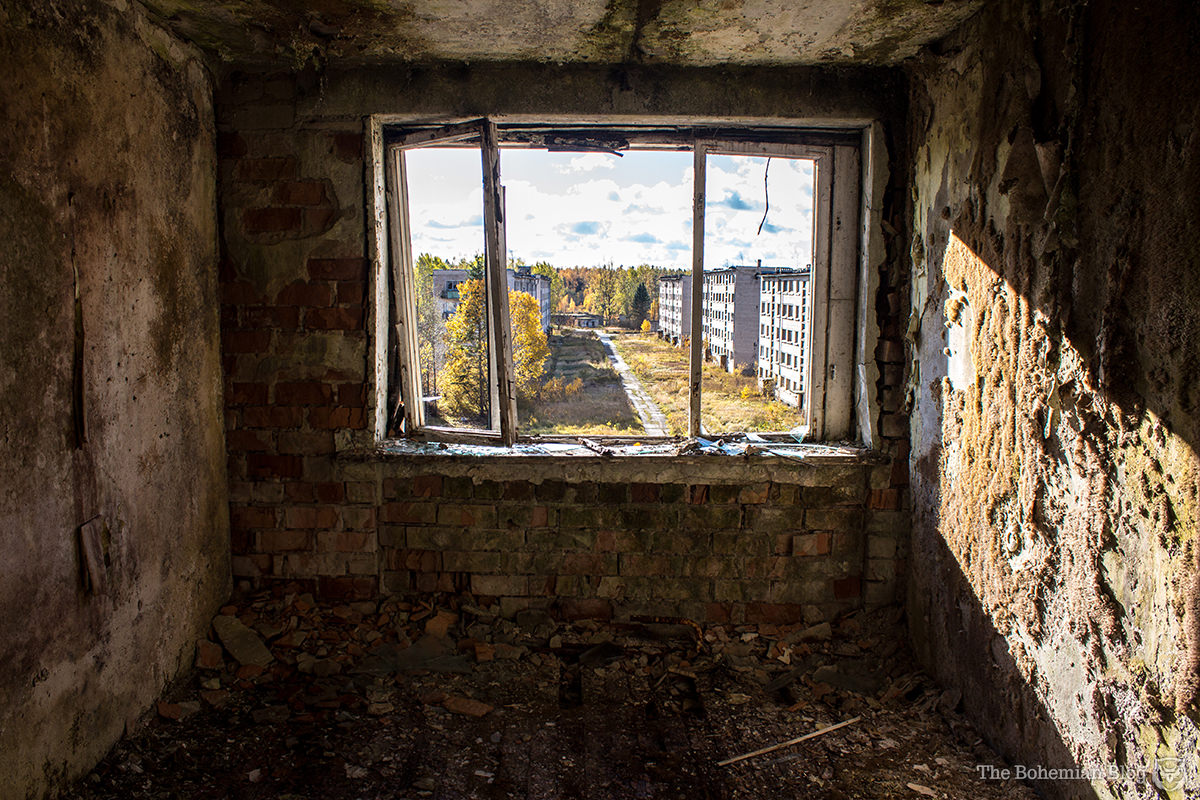

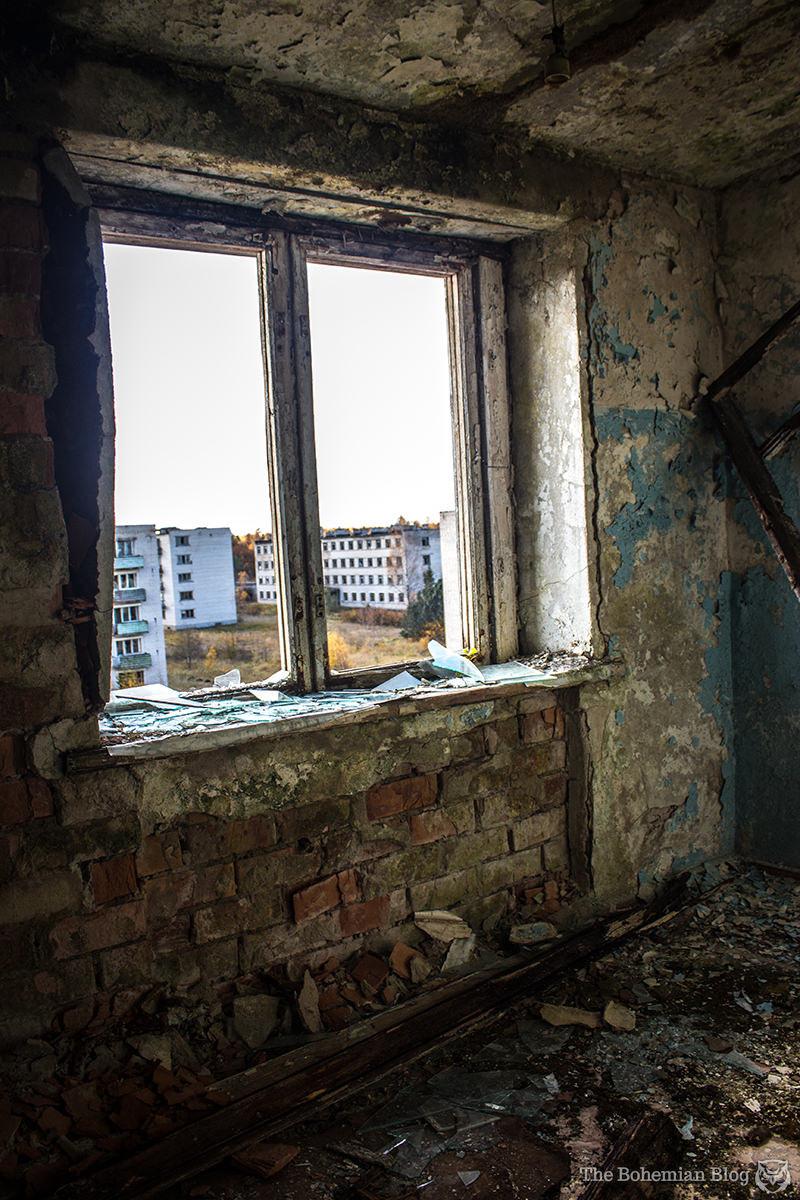

Still, there were vestiges of life left here and there about. Tiny clues. Personal effects. Enough of them, in fact, that if you gathered the whole lot into one room you might just have been able to piece together a snapshot of life in the secret city.
An initialled ceramic cup; a pair of plain leather shoes, repaired a dozen times at least. A pornographic poster on a bedroom door. A football-themed calendar. A couple of times I found religious icons, printed on paper and pinned up inside cupboards. In one room where the wallpaper had peeled off to the ground, the reverse was stuck with old pages of newspaper – it was dated 10 December 1988, and a cartoon referenced the war in Afghanistan. The caption was in English, but I didn’t get the joke.


Each apartment was fitted with a balcony, just large enough to stand and smoke and look out on the endless forest. I gazed over the ruins of Skrunda-1 at my feet; from the broken furniture that lay smashed beneath the windows, to the rooftops, the gaping windows and the solemn, brutalist finger of the water tower. Beyond that, the trees exploded in distant bursts of red, orange and yellow.
We could see the car from here, too: parked on its own beside the gate. Whoever had been looking for us had since given up, it seemed.
By now the day was growing late and though we’d still seen just a fraction of the complex, we’d seen enough to get the measure of it. And so at last, we made our way back to the world of the living – across the security checkpoint, then through the veil of trees – leaving the ghost town, Skrunda-1, alone with its memories.
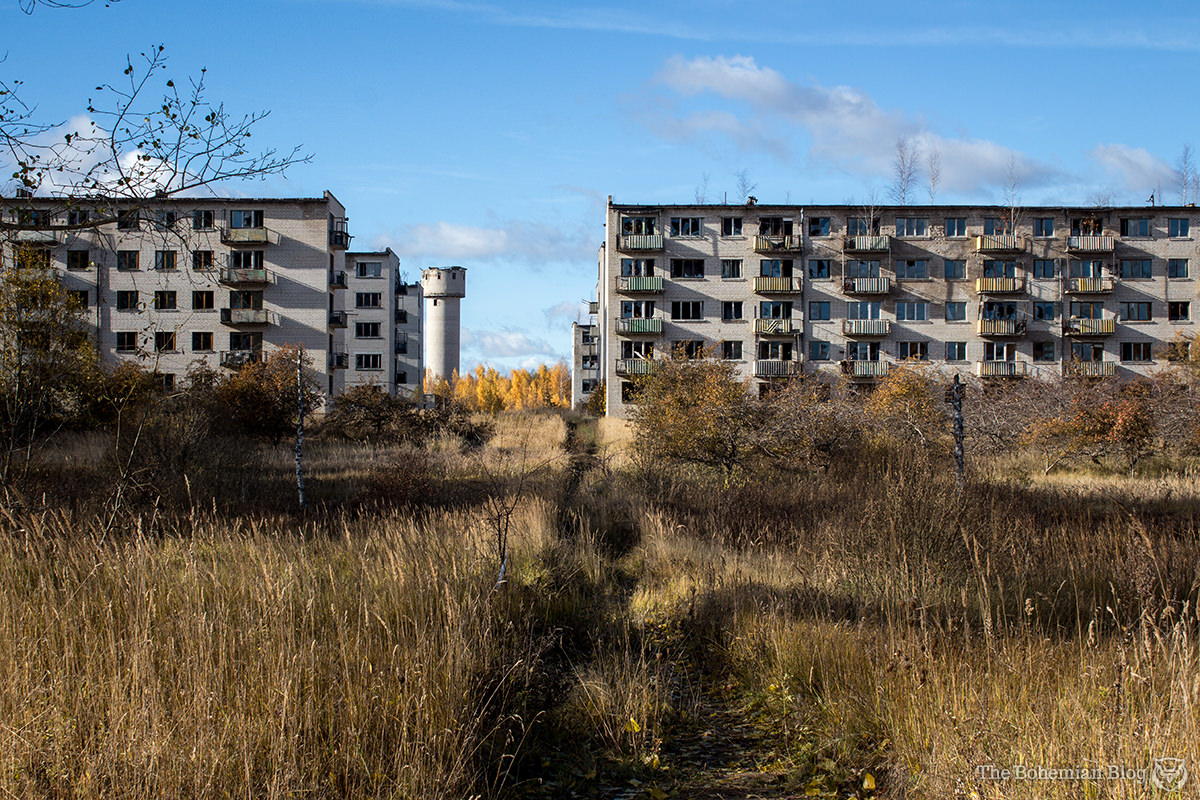
As was the case in many post-Soviet states, the 1990s greeted Latvia with economic crises and an uncertain future. In 2008, the EU and IMF bailed the country out to the tune of €7.5 billion. When the Latvian government finally put the Skrunda-1 site up for auction in February 2010, they were hoping for a quick release of capital.
The entire town sold for the equivalent of €2.2 million, going to a Russian agricultural firm… but the winning bidder failed to make a single payment, so the lot was offered in turn to the second and third bidders. They both refused, and when Skrunda-1 was eventually re-auctioned in June 2010 it sold for only €240,000.
Nothing was done with the site though, and in January 2015 the Latvian government decided to retrieve control of the crumbling town. Skrunda Municipality bought the rapidly devaluing land for just €12,000 this time round. Half of it they gave to the Latvian Army in June, as a training ground – the other half was to be leased privately, under the stipulation that new tenants would be expected to develop infrastructure and employment at the site. As yet, there have been no takers.
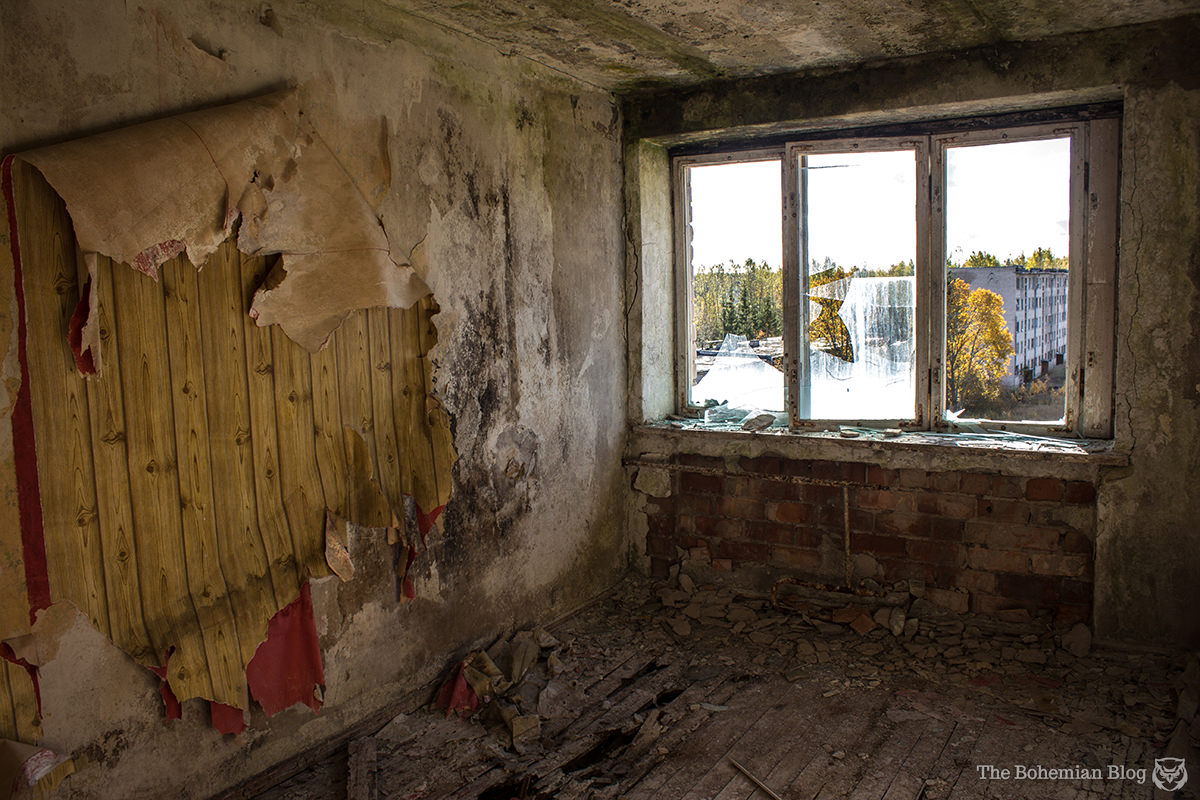
I’ve spoken to people who visited Skrunda-1 in 2012 and 2014, and they all reported the same as what we saw in October 2015: a vast, sprawling ruin. Just two months later though, I received a message from a friend who’d attempted to visit the place in December only to find it, “crawling with military.”
While other former Soviet strongholds in the Baltics have since been repurposed for tourism (such as the Daugavpils Fortress in Latvia, or the Plokstine Missile Base in Lithuania), it feels like Skrunda-1 might have missed its chance; what the Russians didn’t level when they left, the Latvians themselves demolished in a very symbolic show of independence. Now the 100-acre site – what’s left of it, at least – seems set to continue along the only path it has ever known: as a closed military facility hidden deep in the Baltic forests.
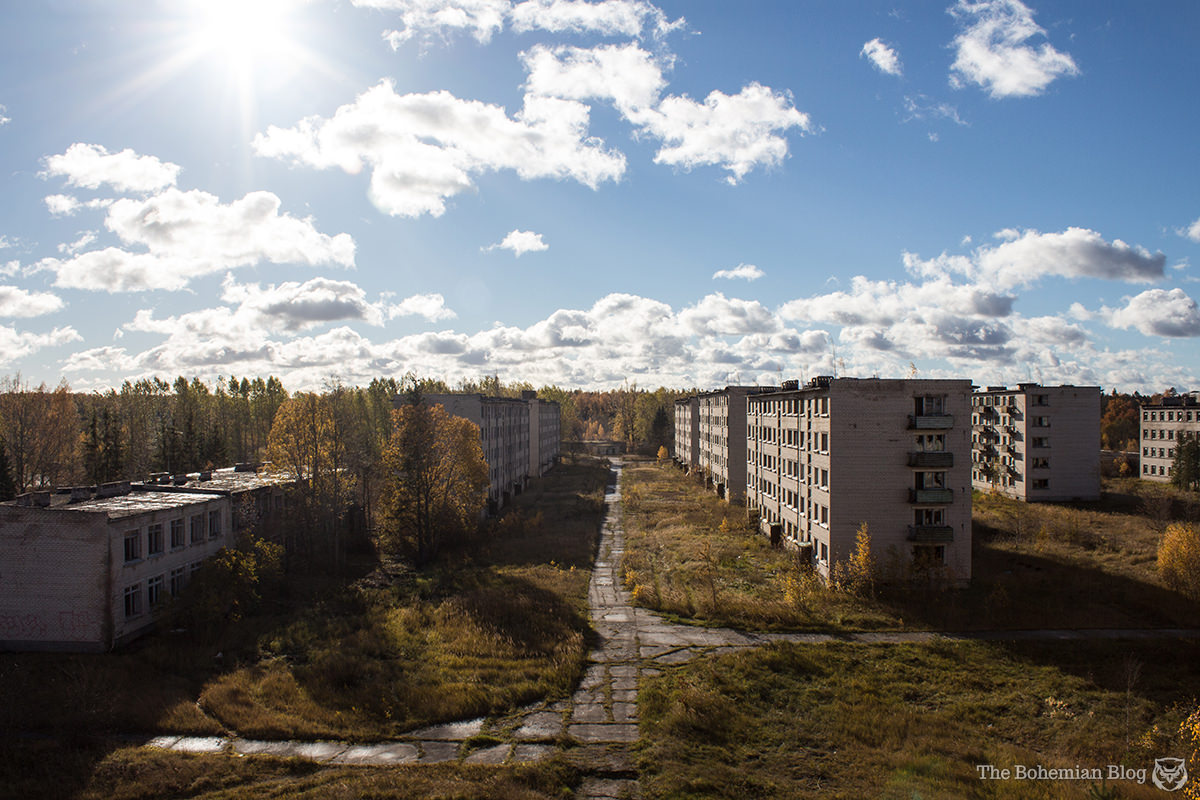




An illustrated guide to urban exploration in the Russian capital.

Poltergeists, ritual murder & a live-in succubus – the 1000-year-old pub with a ghostly reputation

A month-long monument hunt, and what I learned along the way.
Very fucking cool, just passed through Skrunda to Leipaja and now tempted to go back and check out those awesome frescos. Great photography and text guys…well done.
Thank you! I think some of the frescos are gone now – the sports hall collapsed not long after this visit, apparently.
Write me!!!!
Done.
Hi there, thanks for this great and interesting article!! I plan to visit Skrunda 1 in summer 2017. Does anybody know if it still is possible to visit the location? I read somewhere you have to pay an entrance fee? THANKS FOR ANY HELP
You’re welcome – glad it was interesting.
I have heard different things about the place now. I think part of it can still be accessed. There’s actually a tour company in Riga who offer trips there. Maybe that’s the easiest way to plan it?
Fantastic photos – I am very excited to visit this place. Thanks for sharing!
I can also recommend Estonia as a great place to find interesting abandoned places.
http://hiddentallinn.com/category/abandoned-estonia/ Enjoy!
Thanks a lot for the link! I have still never been to Estonia, but it’s high on my list of places to visit. This website looks like it’ll be a useful guide.
I would advise the author to check the facts as there are a lot of erorrs. Also the building you netered was not a school but barracks. The school is actually outside the area and is not publicly available.
Would you be able to back any of this up with evidence? I’m very happy to make edits – but everything written here is based on research. I’m not going to change it, just because someone with no sources said it was wrong. Thank you!
I`m sorry but you are not right! I lived in Scrunda and I know for sure that this building is not school. so u better correct the information u give.
You are absolutely right! this is not a school at all! I lived in Scrunda in my early childhood and I know it
I really enjoyed this post. It is so well written! And your photos are stunning! It’s a place I would like to visit one day, although the safety of these crumbling buildings do concern me… I just read that it has been now been made into more of a tourist attraction, they are even charging an entrance fee – when it’s not used as a military training ground.
Yes, I heard about the tourism development too. Maybe you will get to visit, soon enough? I’m glad to hear that they’re doing something with this place now. It seemed a terrible waste, seeing all these buildings going to ruin. I guess I’ll have to go back and take another look some time!
Thanks for commenting – I appreciate the kind words.
What write it is very true, I am very glad that there are still journalists, with can and speak the way it supposed to be.
Thank you. I certainly do my best to report accurately and fairly, so it’s great to hear feedback like this.
Hi – I absolutely love your posts. I am facinated by everything Soviet but too chicken to ever visit these sights myself. So I’m very happy to just follow your adventures on your blog 🙂
mrssuvi.com
Thanks a lot, Suvi. I’ve heard similar comments from a few people, actually… I’m glad to be able to provide this service!